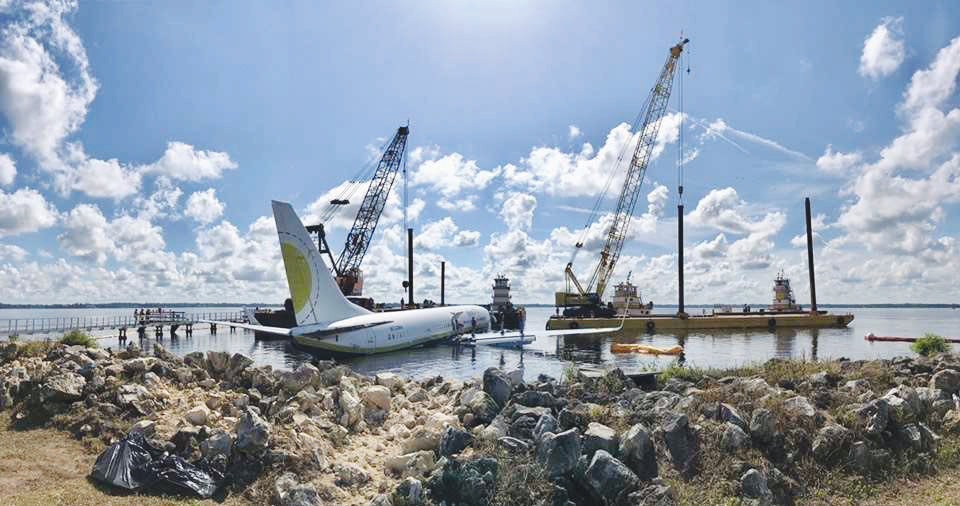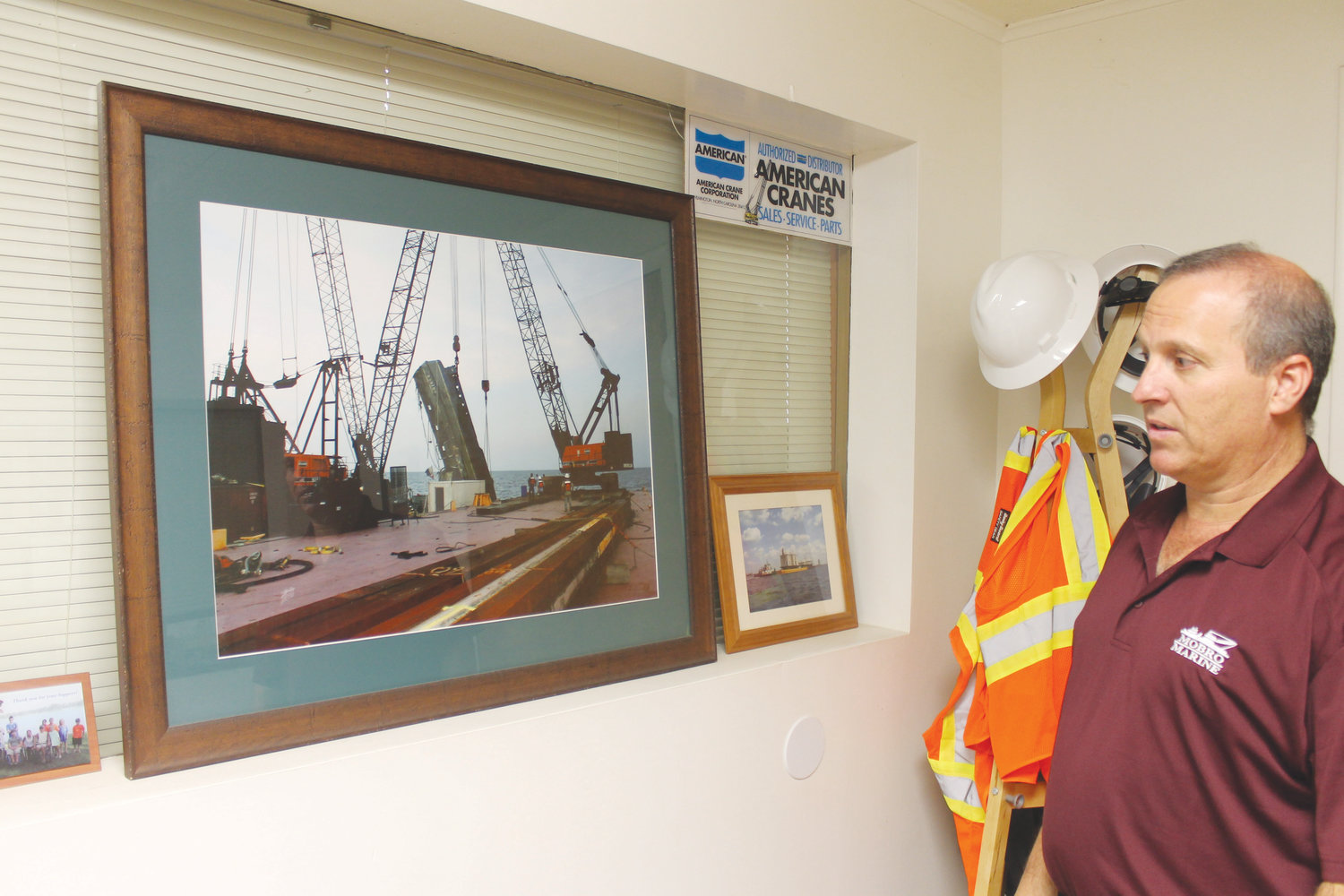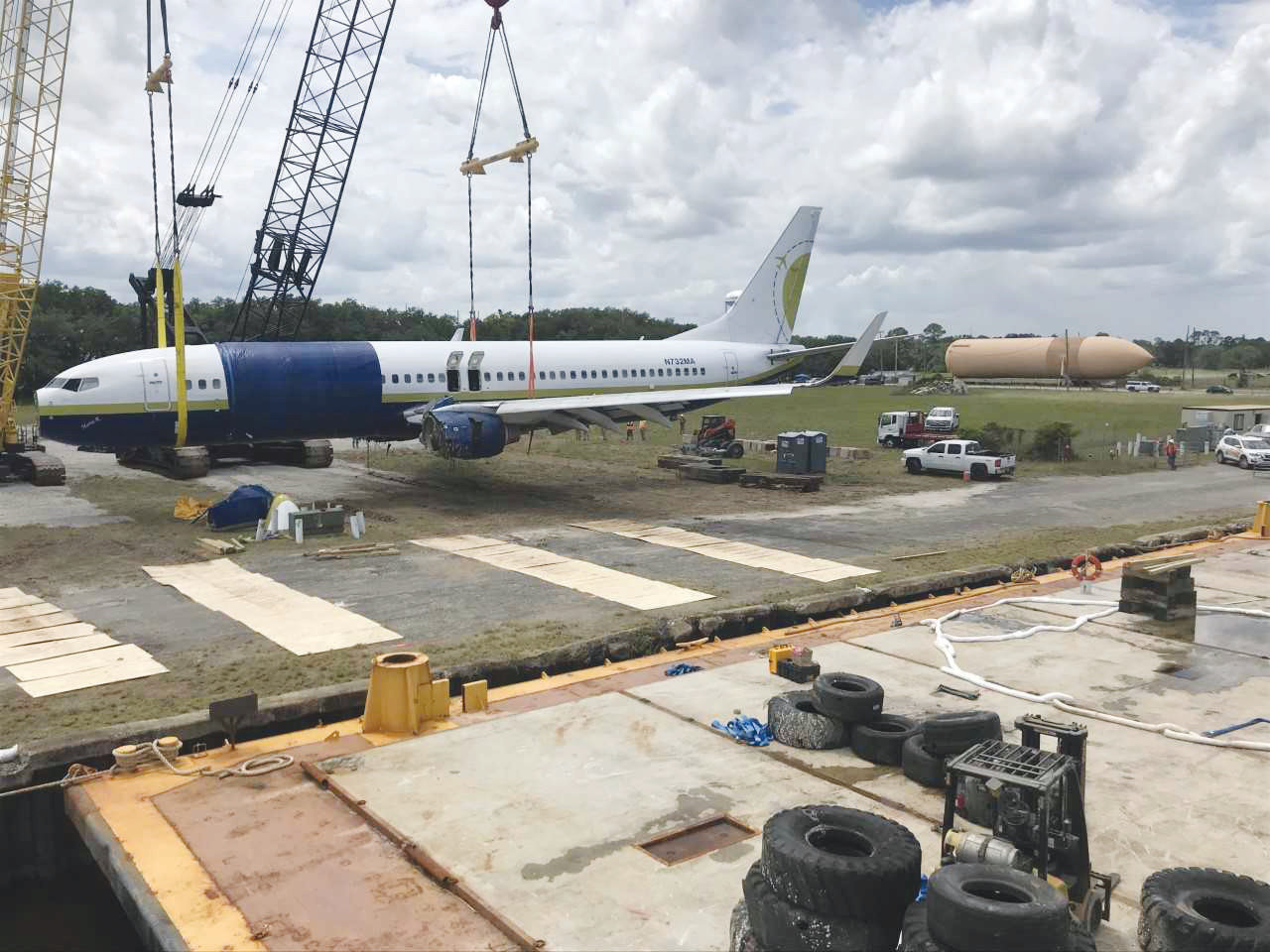Miami Air jet, NTSB get a lift from Green Cove Springs company
MOBRO Marine transports jet back to Reynolds Park
This item is available in full to subscribers.
Attention subscribers
To continue reading, you will need to either log in to your subscriber account, or purchase a new subscription.
If you are a current print subscriber, you can set up a free website account and connect your subscription to it by clicking here.
If you are a digital subscriber with an active, online-only subscription then you already have an account here. Just reset your password if you've not yet logged in to your account on this new site.
Otherwise, click here to view your options for subscribing.
Please log in to continueDon't have an ID?Print subscribersIf you're a print subscriber, but do not yet have an online account, click here to create one. Non-subscribersClick here to see your options for subscribing. Single day passYou also have the option of purchasing 24 hours of access, for $1.00. Click here to purchase a single day pass. |
Miami Air jet, NTSB get a lift from Green Cove Springs company
MOBRO Marine transports jet back to Reynolds Park
GREEN COVE SPRINGS – Compared to other jobs, lifting the waterlogged Miami Air International jet from the banks of the St. Johns River wasn’t especially challenging for MOBRO Marine, Inc.
But their other jobs didn’t get as much attention.
The marine and construction company was entrusted with removing the Boeing 737-800 from the end of the runway at Naval Air Station-Jacksonville and delivering it to Reynolds Park, where the National Transportation Safety Board could conduct its investigation.
And the sight of a 125,000-pound jet floating up the St. Johns River on a barge created hundreds on onlookers and media, said company vice president and CFP Steve Cumella.
“We’ve picked up things much heavier than the plane,” Cumella said. “It was unusual by its shape, not its weight. The plane was heavy, but in the grand scheme of things, it really wasn’t that out of the ordinary.”
What wasn’t ordinary was seeing the plane hoisted onto a pier at Reynolds Park, about 100 yards from another high-profile MOBRO project – a 78,000-pound Space Shuttle external fuel tank.
Marine Patrols kept curious boaters at bay at the river. MOBRO then was forced to set up a roadblock for several days at the pier to keep spectators from getting too close.
“There were a lot of boats in the river trying to watch. They made a day of it,” Cumella said. “We were worried there were too many boats trying to get a close look. When you have two cranes on barges, the last thing you need are the wakes from the boats. It was a difficult pick because of where it was. We had rocks under the boat and a pier real close to the left-side of the plane. There wasn’t a lot of room, and it was so shallow. It was a little tricky.”
The plane was lifted by a sling under the center of the plane and two latches attached to the tops of each wing, Cumella said. After it was out of the river, a third barge wedged between both cranes and the jet was lowered on it. From there, the jet made the 18-mile trip to Green Cove Springs – all under the watchful eyes of the media and public.
The Boeing 737-800 was completing a scheduled military charter flight from Guantanamo Bay, Cuba, on May 3 when it skidded off the NAS-Jacksonville runway during a severe thunderstorm. All 136 passengers and a crew of seven walked away from the crash, although 21 required treatment for minor injuries at local hospitals.
Passengers at the front of the jet were soaked by the brackish water, but the plane came to rest in the shallow waters near the shoreline.
MOBRO Marine lifted the 62-ton jet onto a barge on May 7 and it made the four-hour journey to Reynolds Park a day later. Once the NTSB finishes its investigation, the jet will be scrapped, the airline said.
Since there wasn’t a timeframe for the investigation, MOBRO decided not to park the jetliner at the pier and not on its 30-acre yard.
“We’ve never had our work under so much continuous limelight,” Cumella said. “We’re a little-known secret down in Green Cove Springs. We’ve been family-owned since 1962. Our main business is renting equipment for dredging and construction for roads and bridges. We’ve picked a lot of boats out of the water, too. We’ve picked just about everything. The plane was unusual because it got so much attention. We just went about our work.”
MOBRO employs 110 people, Cumella said. Much of the company’s recent focus has been in the Caribbean as countries try to build new piers and rebuild older ones that were damaged by hurricanes. In fact, one of the cranes used to lift the Miami Air jet from the St. Johns had returned from the Bahamas just a few hours earlier.
None of those other jobs, however, got as much attention.
“It wasn’t the biggest or heaviest pick we’ve done,” Cumella said. “But it certainly was one of the most-interesting.”













